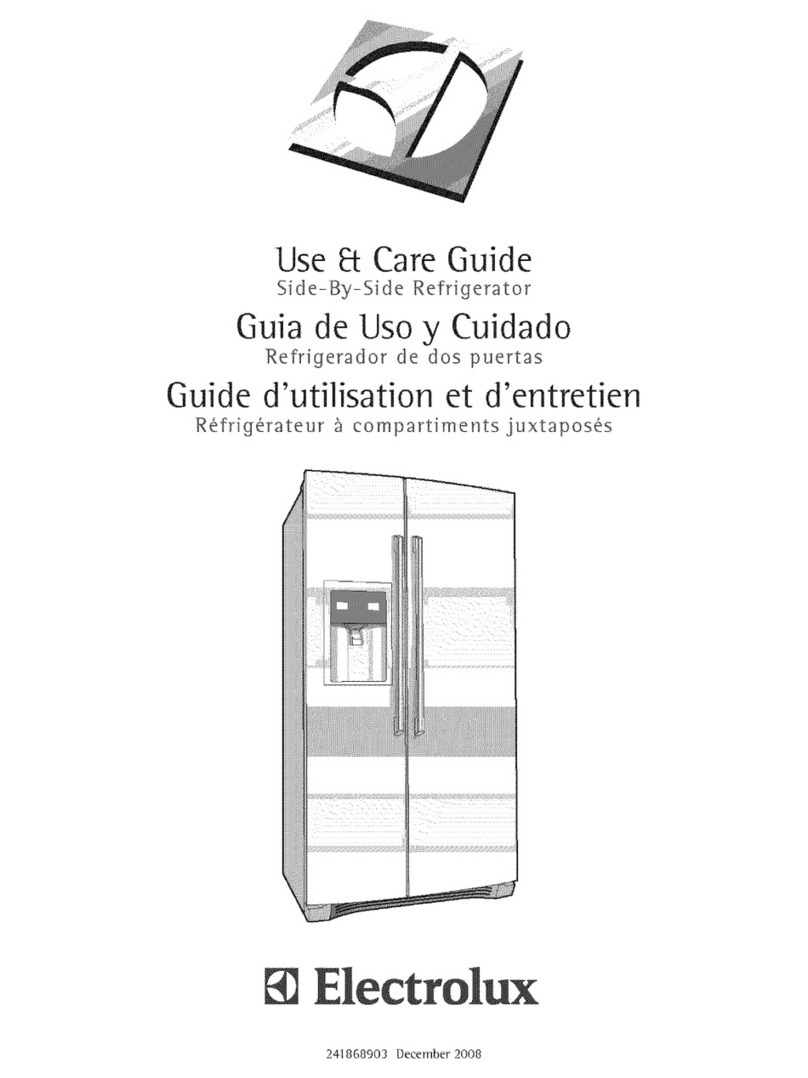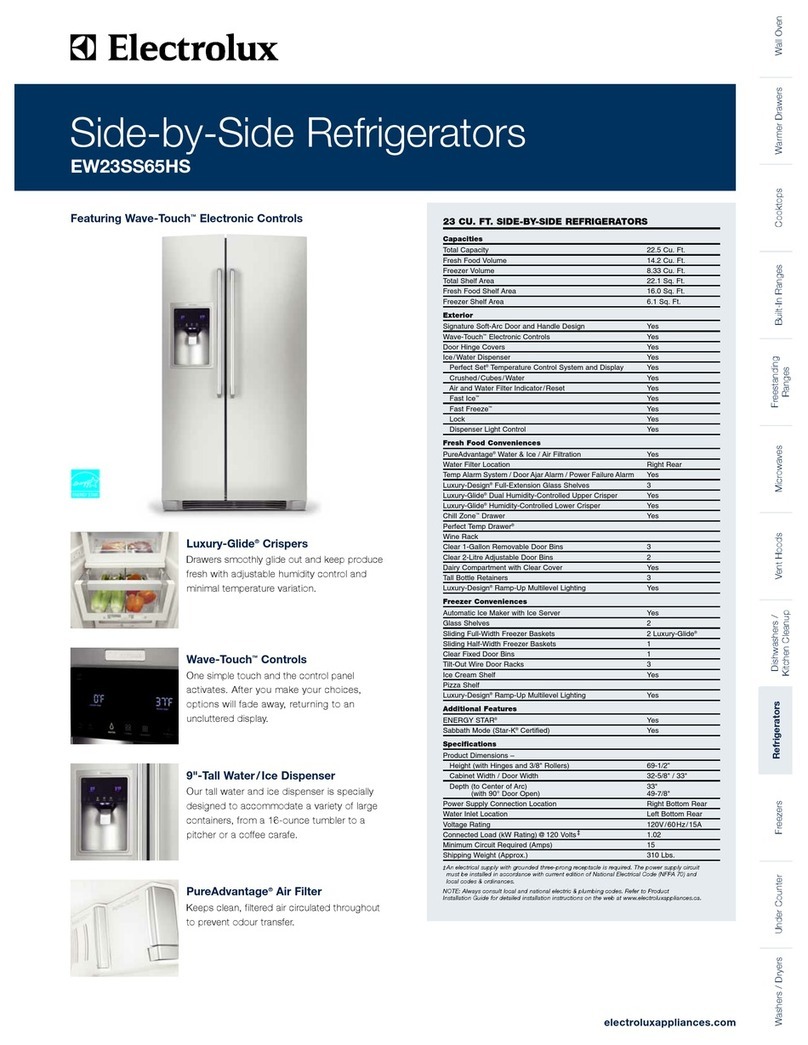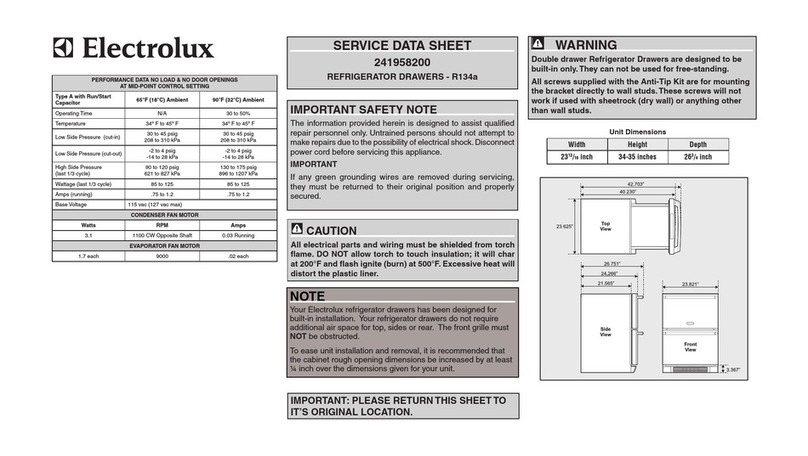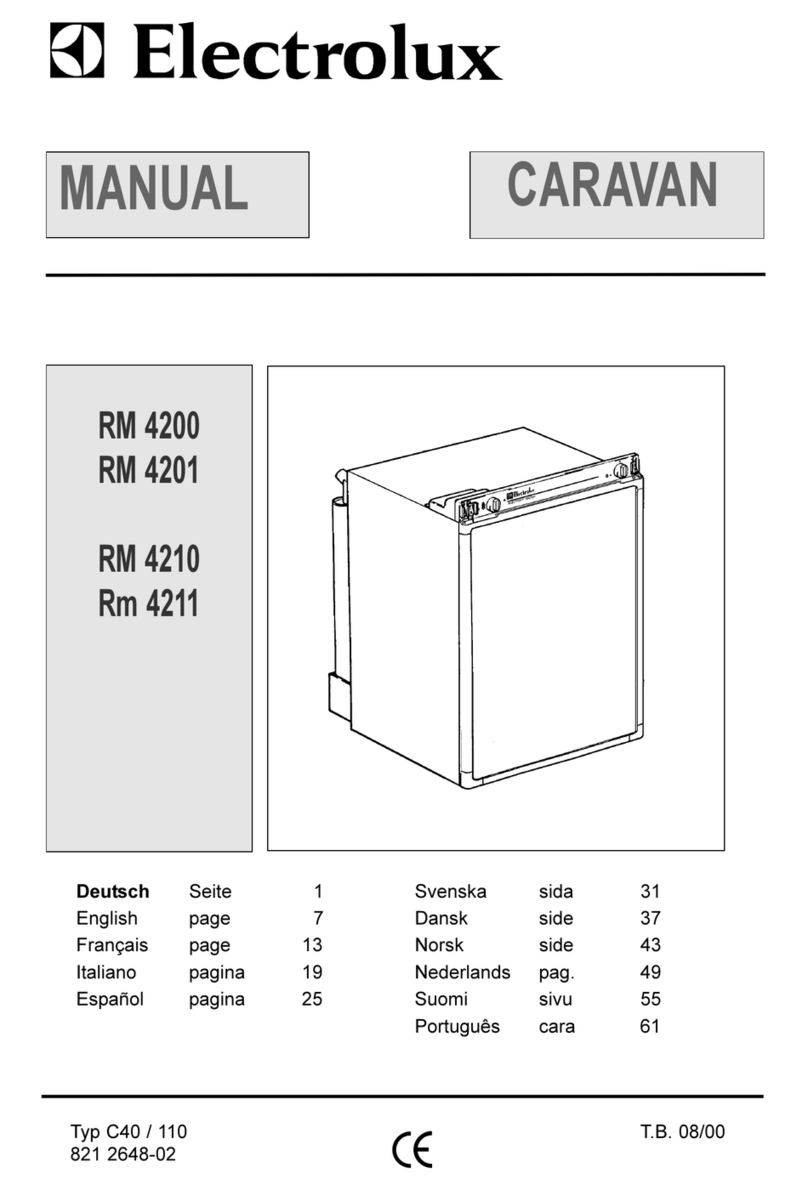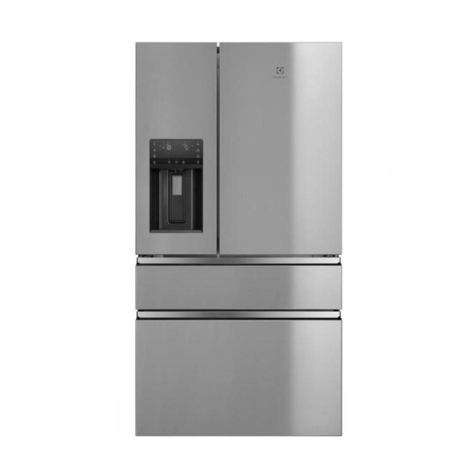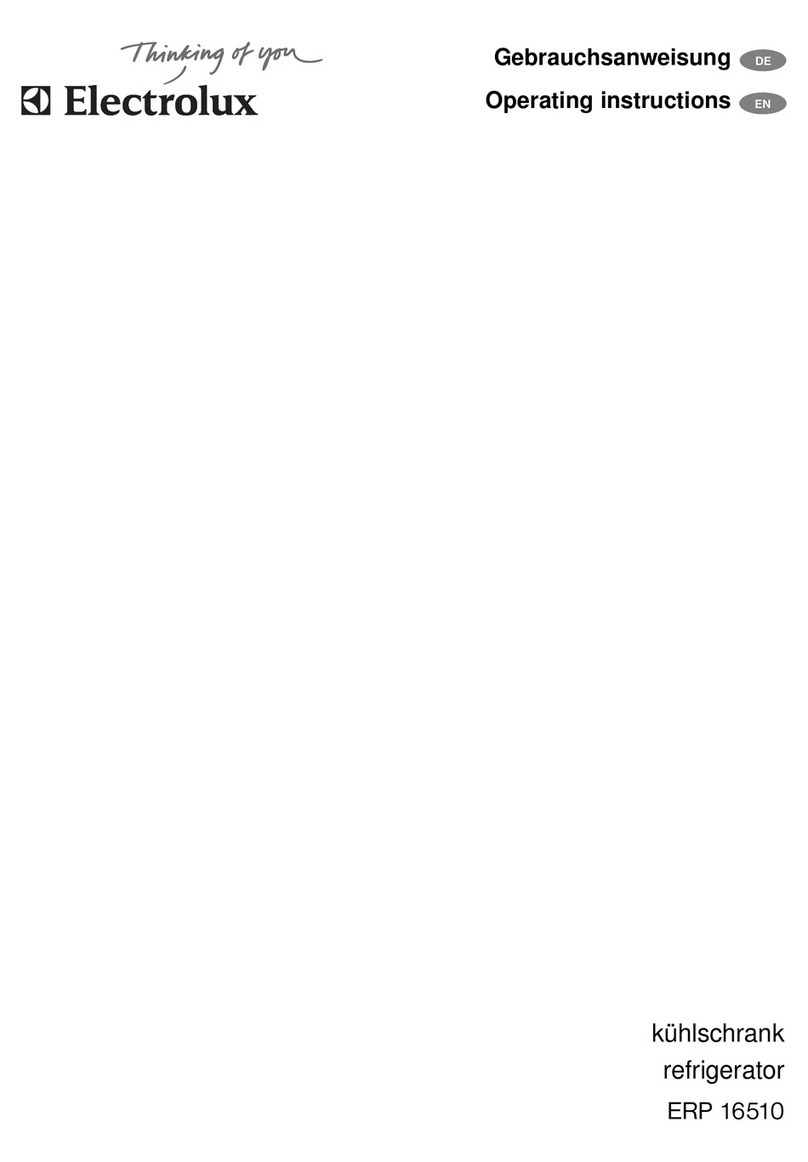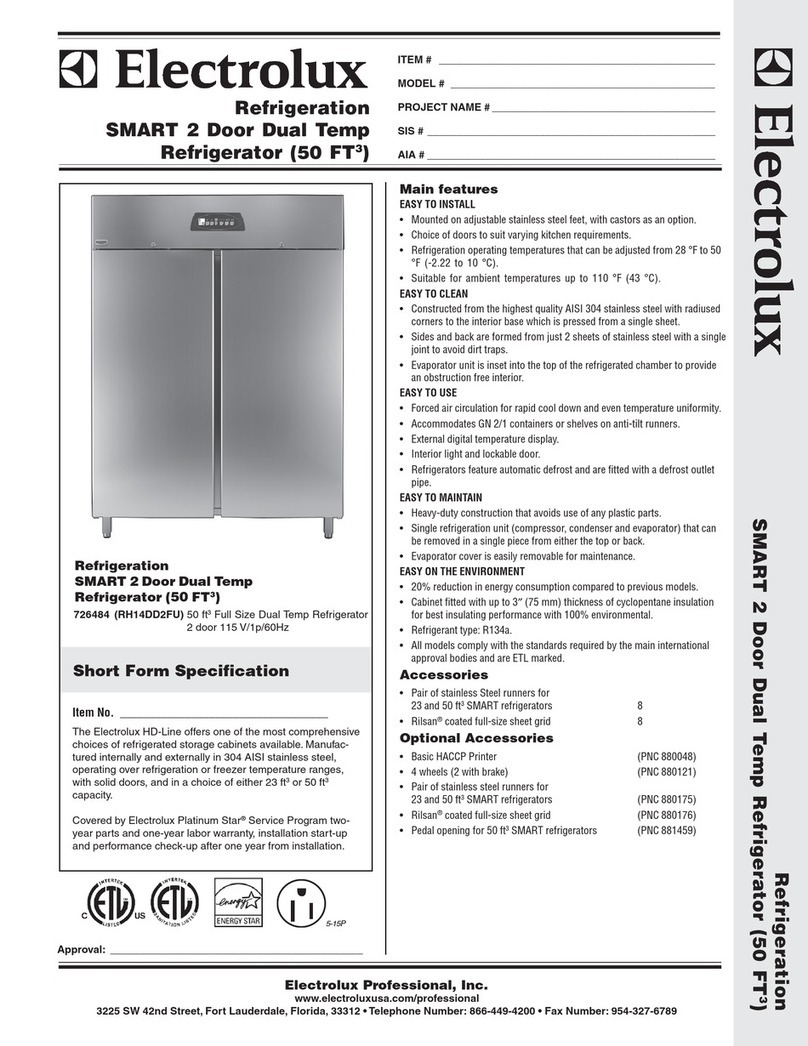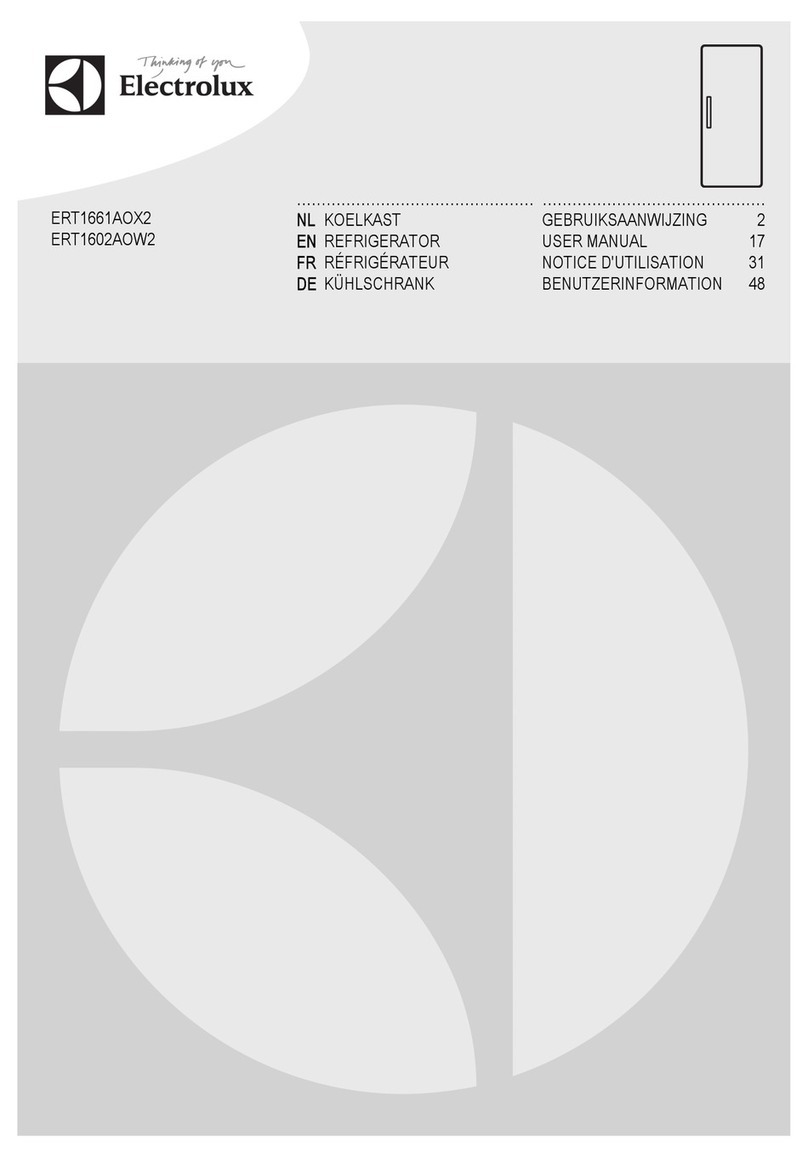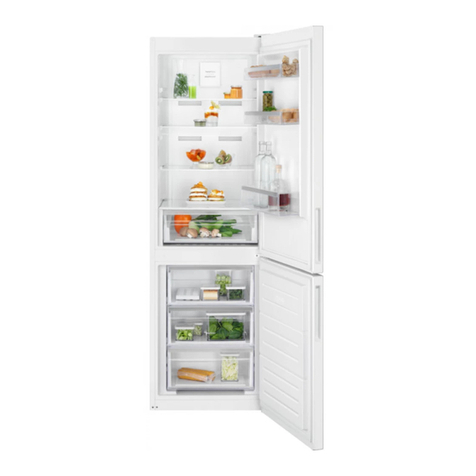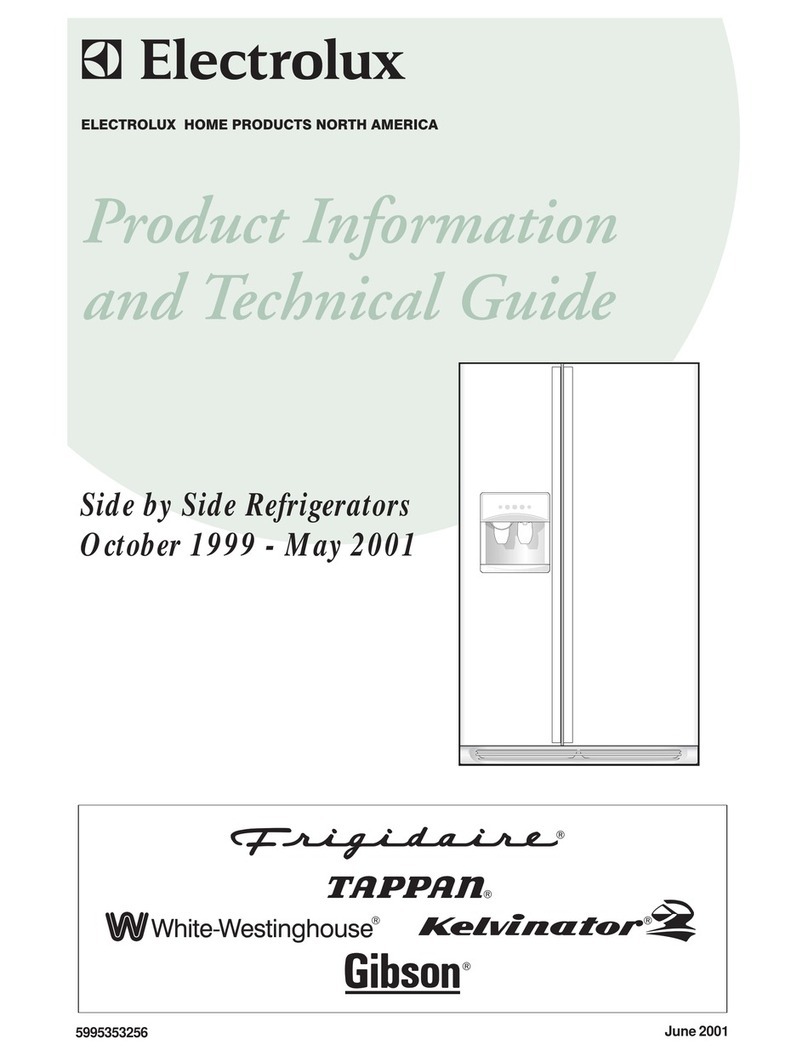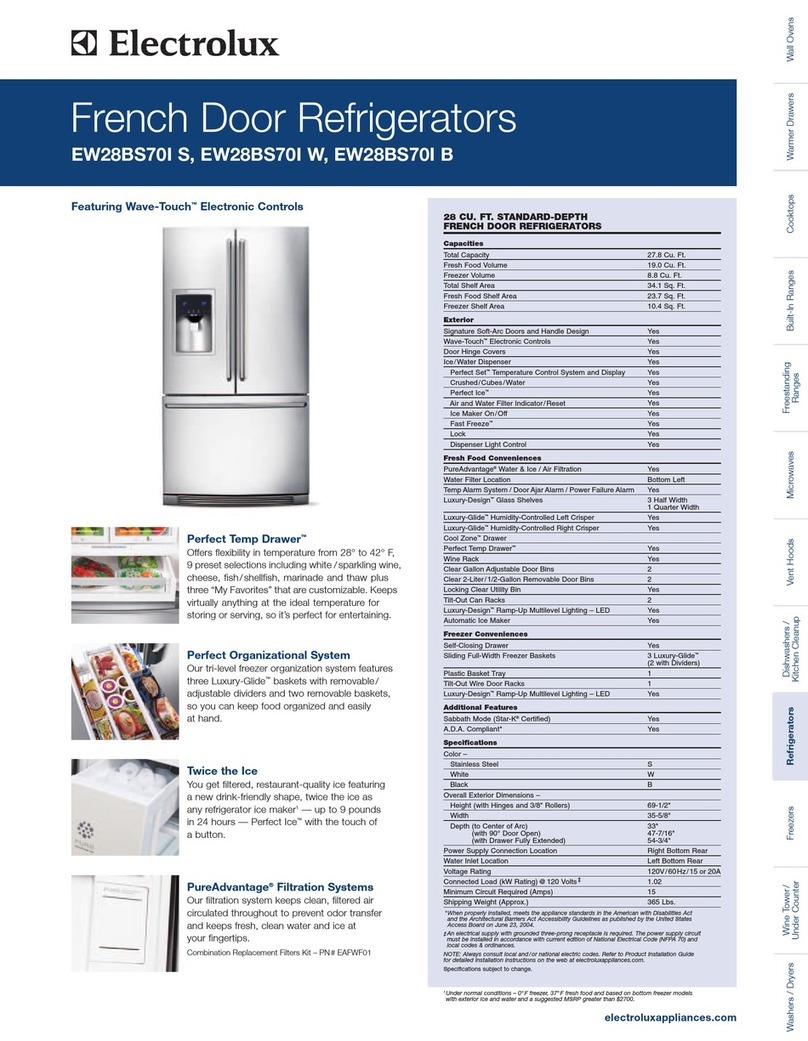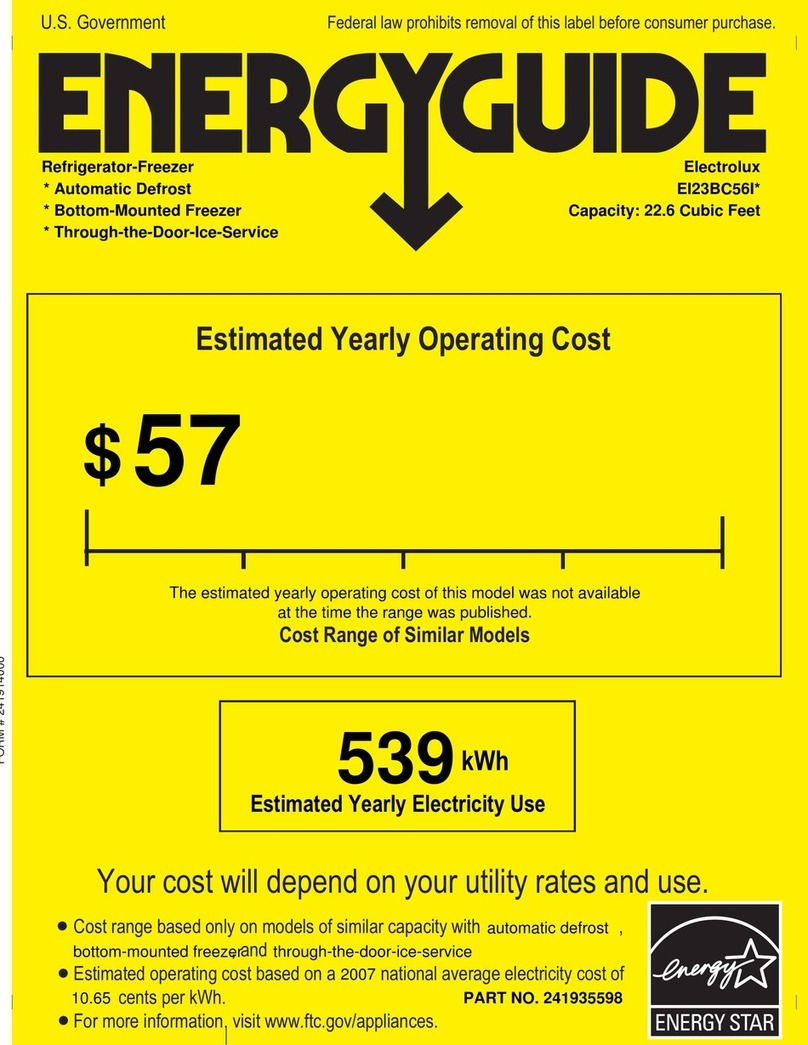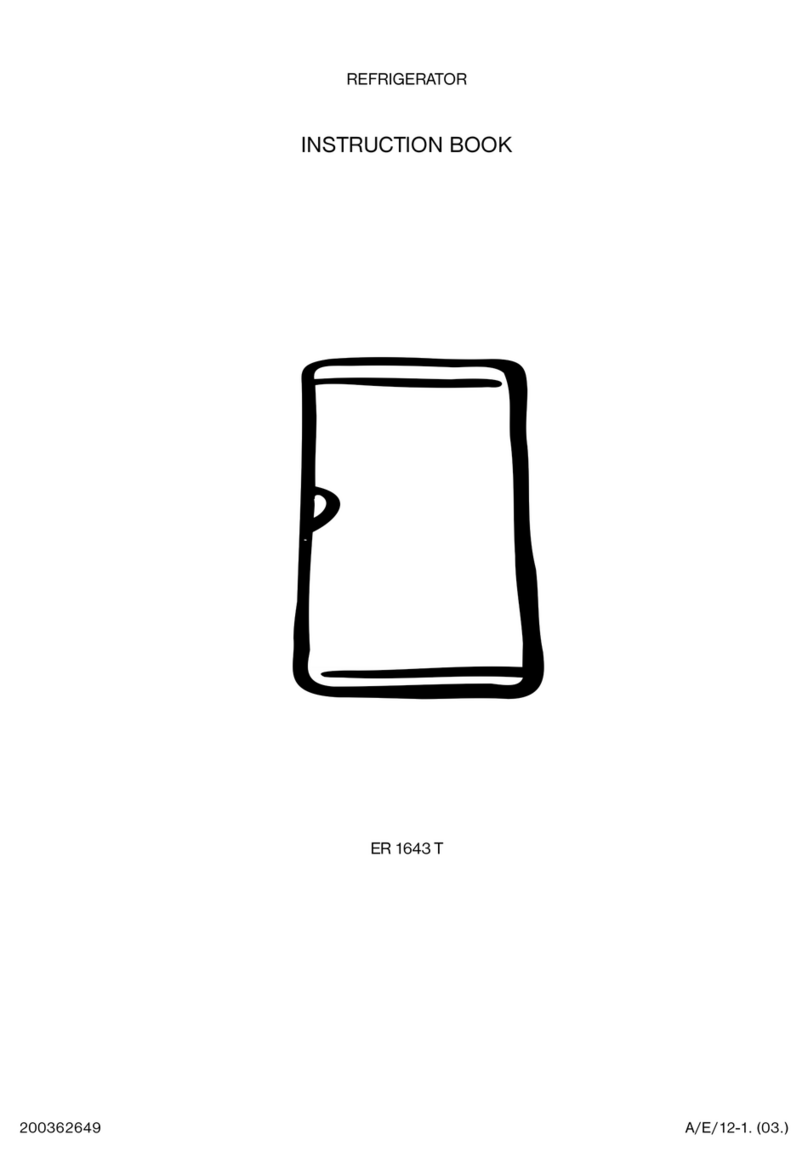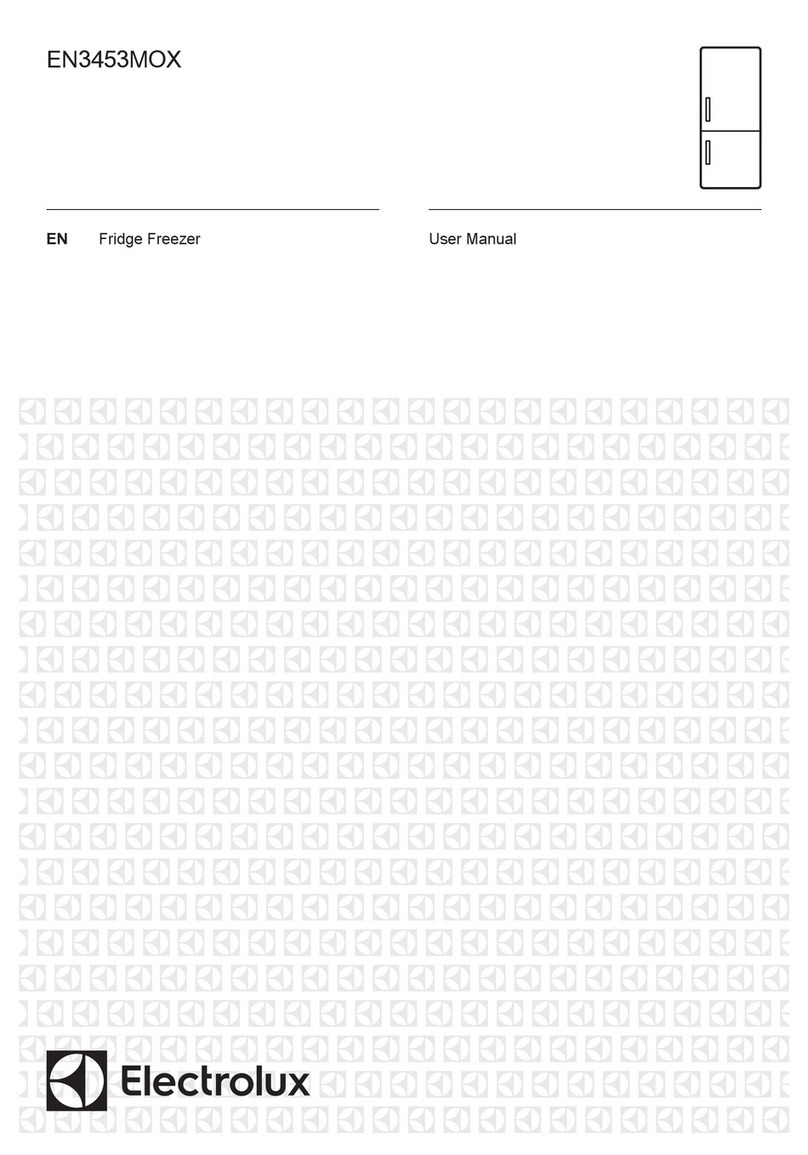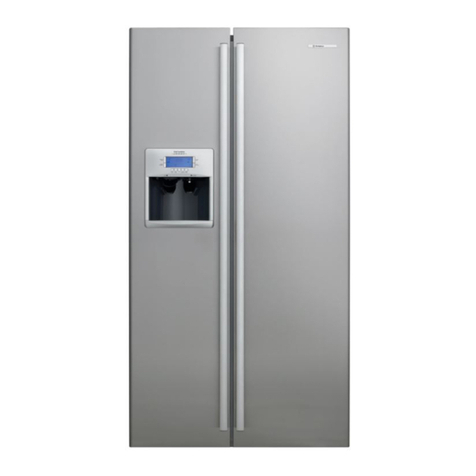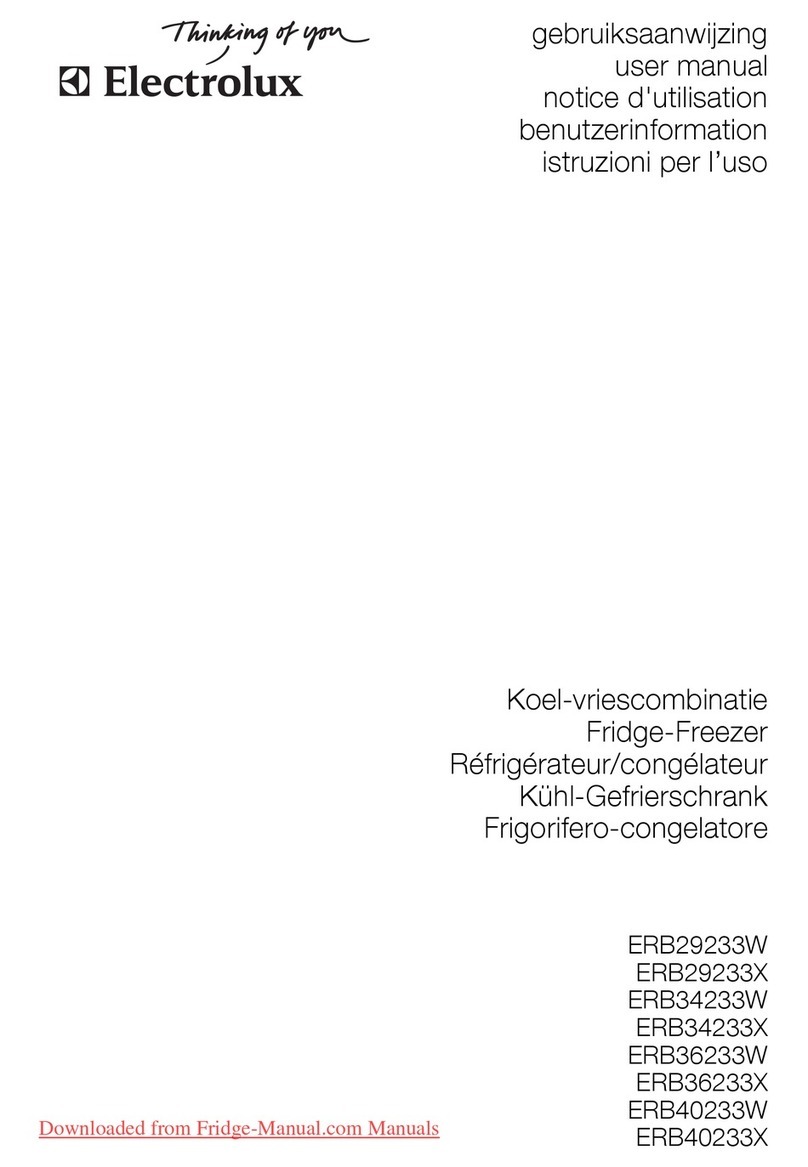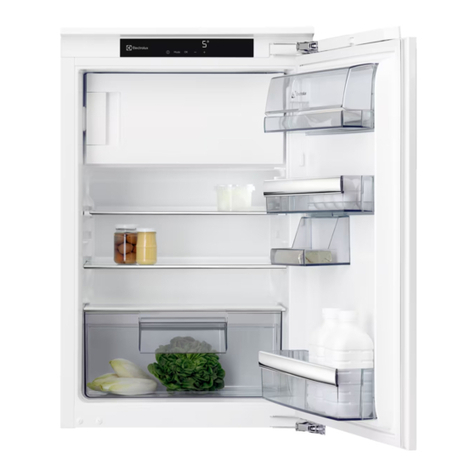-
• Remove the lower trim moulding and then withdraw the
panel by sliding
it
downwards.
• Fit new panel
in
place and slide
it
up
as
far
as
possible.
• Fit the trim moulding back
in
place.
BUILDING-IN
The refrigerator is intended for
in
stallation
in
a caravan or
motorhome, and the description relates to this application.
The refrigerator must not
be
exposed to radiated heat from
hot objects (e.g. below a cooker without proper heat shiel-
ding).
Excessive heat irradiation impairs performance and leads to
increased energy consumption. For this reason the refrige-
rator should
be
installed
if
possible not
at
the entrance side
of the vehicle -normally orientated south and often with an
awning which would impair the dispersion of heat and
combustion gases from the ventilation openings.
It
is
not a good practice
to
install the refrigerator so that the
vent openings are covered
by
the vehicle's entrance door
when this is open. This would reduce the ventilation air
fl
ow
to the cooling unit and reduce refrigeration performance.
The enclosure
The refrigerator must
be
installed
in
an
enclosure, the
dimensions of which are shown
in
TECHNICAL DATA.
The bottom of the enclosure must
be
horizontal and even
so
that the refrigerator can
be
easily pushed into place.
It
must
be
sturdy enough to carry the wieght of the refrigera-
tor.
Battens must
be
installed at the enclosure and fitted with
sealing strips, as shown
in
fig. 4.
Slide
in
the refrigerator until
it
is
flush with the front of the
recess. There must
be
10-20
mm
free space behind the
refrigerator.
Four fasteners are fitted
in
plastic bushings
in
the side walls
of the fridge, fig.
7.
They are used for securing the refrigera-
tor
in
the enclosure.
The side walls of the enclosure and/or any wooden braces
installed to hold the refrigerator must
be
dimensioned to
seat the screws secure
ly,
also considering the forces due
to
the movement of the vehicle.
With the refrigerator
in
place, drive the screws through the
bushings
in
the lining of the refrigerator into the walls of the
enclosure (fig.7). There must not
be
more than 3mm of
clearance between refrigerator and enclosure
on
each side.
If
necessa
ry,
wooden strips or similar should
be
fitted.
Note: This
is
the only approved means of securing the
refrigerator
to
the enclosure and to the vehicle. Fasteners
penetrating other parts of the insulation (PU) foam of the
refrigerator might damage components like electric wiring
etc.
VENTILATION OF THE UNIT
At
high ambient temperatures the refrigeration unit will only
perform adequately when properly ventilated.
The refrigeration unit is ventilated via two openings
in
the
wall of the caravan (see fig. 5). Fresh air enters through the
lower opening and warm air is discharged through the upper
one.
Locate the lower opening immediately above the floor of the
recess, and the upper one as high
as
possible above the
condenser (C) of the refrigeration unit, at least as shown
in
fig. 6b but preferably
as
shown
in
fig. 6a.
Ventilation grilles Fig. 2
The openings
in
the caravan wall must
be
fitted with the
Electrolux ventilation systems.
Fitting the grilles, model A 1620, which were specially
developed by Electrolux for this purpose (shown as D
in
fig.
6). It
is
a good idea, to install the frame R 1640
(A
in
the
same figure),
at
the same time. Then the grilles can
be
easily removed which permits inspection and small repairs
to be carried out without the necessity for removing the
refrigerator from the recess.
If there is no outer grille at floor level where leaking gas can
escape, a 40 mm hole to the outside should
be
made in the
floor of the recess to drain any unburnt gas to the outside
gas.
Fit the hole with wire mesh and
an
angled plate
to
protect
from stones, mud etc.
Removal of flue gases
The ventilation passage at the rear of the recess, between
the outer wall of the vehicle and the refrigerator (fig.
6)
,
is
sealed off against the living space, and
so
cold draughts are
excluded (winter camping) and no flue gases can penetrate
into the vehicle. Thus a special flue outlet is no longer
necessary -the gases are dispersed through the upper vent
grille.
Note: With this mode of installation the same type of grilles
(without
an
integrated flue outlet), should
be
installed
at
the
upper as well as at the lower vent open-ning. The angled
T-piece for the flue tube (when delivered) should not
be
used
in
this case.
The top of the enclosure above the flue tube (I), fig
6,
should
be
covered with aluminum sheet metal, as indicated
in
(B), to facilitate the heat dispersion.
In
fig
. 6 the letters have the following meaning:
A. Frame R 1640 for the grilles
B. Aluminum cladding
C.
Condenser of cooling unit
D. Vent grill A 1620
E. Sealing profile (optional extra)
Width 486 mm, Electrolux art. nr. 295 1147-10
F.
Refrigerator rear wall
G.
Wooden batten approx.
10
x 20 mm (see
fig
.
4)
H.
Height of the enclosure (see TECHNICAL DATA)
I.
Flue tube
LP
GAS C
ON
NECTION
CAUTION! CHECK THAT
THE
GAS SUPPLIED TO
THE REFRIGERATOR IS AT THE CORRECT
PRESSURE. SEE THE REDUCING VALVE ON THE
LP GAS CONTAINER
The refngerator
IS
designed for operation
on
LP gas of
Butane type the pressure of which must be 28 mbar for
Butane and
37
mbar for Propane.
11
